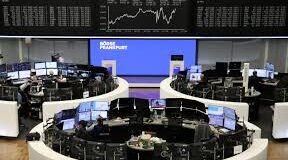
China’s export and import growth in the January-February period beat forecasts, suggesting global trade is turning a corner in an encouraging signal for policymakers as they try to shore up a stuttering economic recovery, reports Reuters.
China’s improved export data joins those of South Korea and Germany, and Taiwan, who all saw their shipments top expectations over the first two months of the year, with the Asian economies benefiting from a surge in demand for semiconductors.
Exports from the world’s second-biggest economy in the two months were 7.1 percent higher than a year before, customs data showed on Thursday, beating a Reuters a poll that expected an increase of 1.9 percent. Imports were up 3.5 percent, compared with a poll forecast for growth of 1.5 percent.
“The better-than-forecast data echoes a recovery in global trade driven by the electronics sector, but also benefits from a low base effect, as export growth in January-February 2023 was 6.8 percent,” said Xu Tianchen, senior economist at the Economist Intelligence Unit.
The customs agency publishes combined January and February trade data to smooth out distortions caused by the shifting timing of the Lunar New Year, which this year fell in February.
Chinese Premier Li Qiang on Tuesday announced an ambitious 2024 economic growth target of around 5 percent and promised to transform the country’s development model, which is heavily reliant on exporting finished goods and industrial overcapacity.
China has been grappling with sub-par growth over the past year amid a property crisis and as consumers hold off spending, foreign firms divest, manufacturers struggle for buyers, and local governments contend with huge debt burdens.
Policymakers have pledged to roll out further measures to help shore up growth after the measures implemented since June had only a modest effect, but analysts caution Beijing’s fiscal capacity is now very limited and note Li’s address to the annual meeting of the National People’s Congress also failed to inspire investor confidence.
Many analysts worry that China may begin flirting with Japan-style stagnation later this decade unless policymakers
take steps to reorient the economy towards household consumption and market-allocation of resources.
China’s trade surplus grew to $125.16 billion, compared with a forecast of $103.7 billion in the poll and $75.3 billion in December.
 Weekly Bangla Mirror | Bangla Mirror, Bangladeshi news in UK, bangla mirror news
Weekly Bangla Mirror | Bangla Mirror, Bangladeshi news in UK, bangla mirror news







